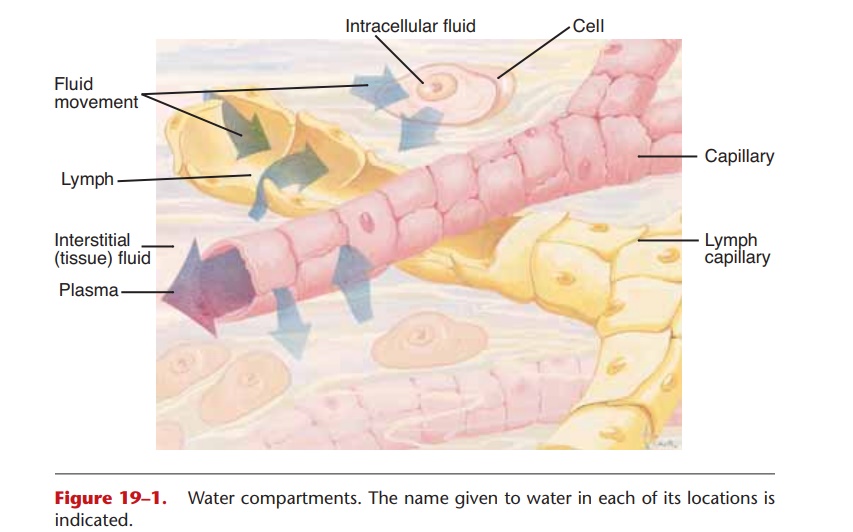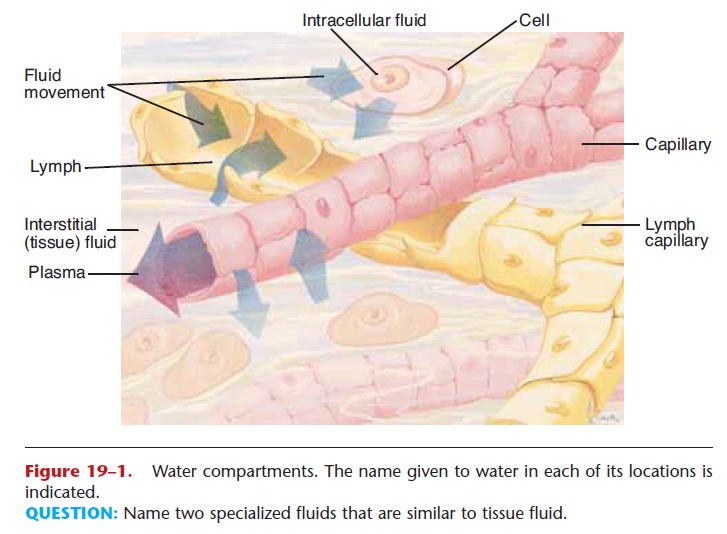Chapter: Essentials of Anatomy and Physiology: Fluid-Electrolyte and Acid-Base Balance
Water Compartments in Human body

WATER COMPARTMENTS
Most of the water of the body, about two-thirds of the total water volume, is found within individual cells and is called intracellular fluid (ICF). The remaining third is called extracellular fluid (ECF) and includes blood plasma, lymph, tissue fluid, and the specialized fluids such as cerebrospinal fluid, synovial fluid, aque-ous humor, and serous fluid.
Water constantly moves from one fluid site in the body to another by the processes of filtration and osmosis. These fluid sites are called water compart-ments (Fig. 19–1). The chambers of the heart and all of the blood vessels form one compartment, and the water within is called plasma. By the process of filtra-tion in capillaries, some plasma is forced out into tis-sue spaces (another compartment) and is then called tissue fluid. When tissue fluid enters cells by the process of osmosis, it has moved to still another com-partment and is called intracellular fluid. The tissue fluid that enters lymph capillaries is in yet another compartment and is called lymph.

Figure 19–1. Water compartments. The name given to water in each of its locations is indicated.
The other process (besides filtration) by which water moves from one compartment to another is osmosis, which, you may recall, is the diffusion of water through a semi-permeable membrane. Water will move through cell membranes from the area of its greater concentration to the area of its lesser concen-tration. Another way of expressing this is to say that water will diffuse to an area with a greater concentra-tion of dissolved material. The concentration of elec-trolytes present in the various water compartments determines just how osmosis will take place.
Therefore, if water is in balance in all of the compartments, the electrolytes are also in balance. Although water and ions are constantly moving, their relative propor-tions in the compartments remain constant; this is fluid–electrolyte homeostasis, and its maintenance is essential for life.
Related Topics